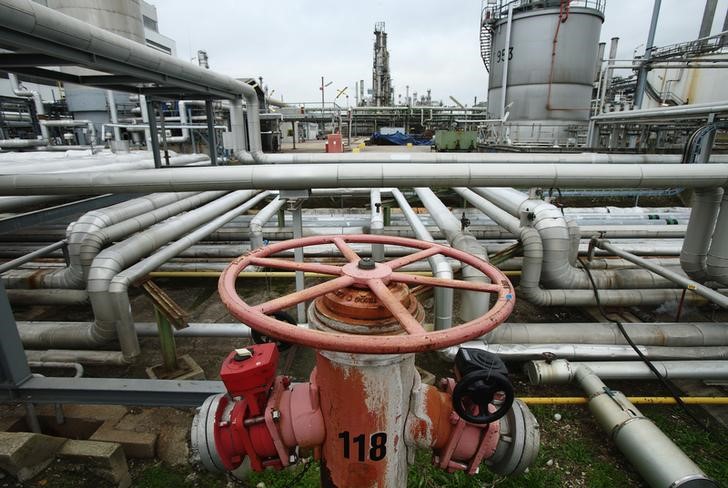
Investing.com– Oil prices settled lower Wednesday, adding to bruising losses over the past week as the prospect of a less severe escalation in the Middle East and weak demand weighed.
At 14:30 ET (18:30 GMT), fell 0.04% to $74.22 a barrel, while fell 0.3% to $70.39 a barrel.
Middle East fears ease after Israel report
Prices plummeted more than 4% in the prior session after fears of a severe escalation in the Middle East conflict eased following a Washington Post report said Israeli Prime Minister Benjamin Netanyahu assured U.S. officials that the country would not attack Iran’s oil and nuclear sites.
Markets have been watching for Israel’s retaliation over an early-October missile strike by Iran, as hostilities between Israel and Iran-backed forces showed little signs of easing.
Fears of all-out war in the region had been a major boost to oil prices, as traders priced in a greater risk premium on the prospect of Middle East supply disruptions.
IEA, OPEC warnings dent oil outlook
Oil markets were also grappling with warnings on increased supply and lower demand from two major industry groups this week.
The International Energy Agency said in a on Tuesday that it expects oil markets to see a supply glut in 2025, and that it stood ready to plug any potential supply disruptions from the Middle East.
The agency also slightly trimmed its 2024 demand growth forecast, citing weakness in top importer China.
The cut came just a day after the cut its demand growth forecast for 2024 and 2025, citing concerns over worsening demand in China.
China have announced a slew of stimulus measures in recent weeks. But investors were still underwhelmed by a lack of details on the timing and scale of the planned measures.
Weak economic readings from the country also dented sentiment.
OPEC faces a dilemma – Bernstein
Global oil demand remains in the doldrums, according to Bernstein, creating a dilemma for OPEC given the looming surplus in crude supply next year.
“Heading into 2025, we remain concerned about the looming surplus in crude supply next year which would reduce the call on OPEC by 0.9 million bbls/day,” said analysts at Bernstein, in a note dated Oct. 16.
“OPEC’s dilemma is that to support current prices, they probably need to cut. But with spare capacity already at elevated levels, this is far from what OPEC would like to do,” said analysts at Bernstein, in a note dated Oct. 16.
More recently, the OPEC members have been talking about unwinding cuts, although this could be an attempt to maintain discipline among OPEC members, Bernstein said.
At this stage any increase in OPEC output towards the end of the year looks unlikely, but this is probably the biggest thing to worry about in the near term for oil investors.
“While the setup on fundamentals does not look positive for Brent, geopolitics remains the key upside risk which cannot be completely discounted given the geopolitical risks,” Bernstein added.
(Peter Nurse, Ambar Warrick contributed to this article.)

